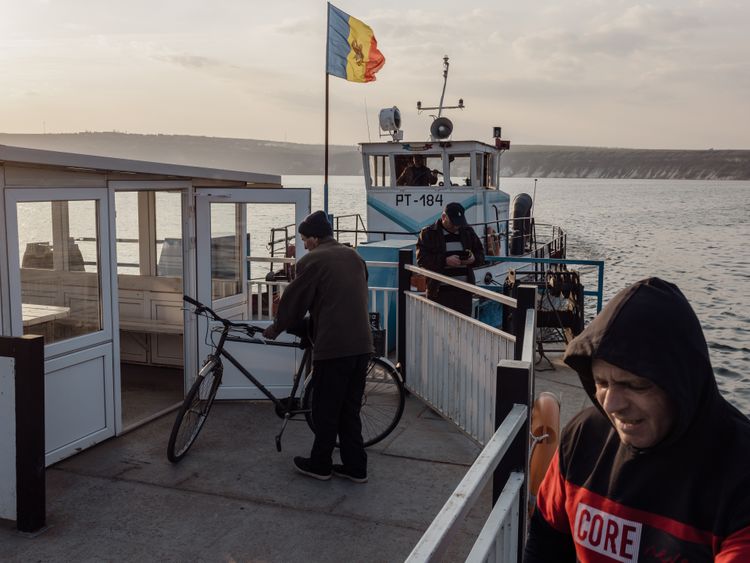Photos: Fears, vulnerabilities, divides and dancing in Moldova

Molovata Noua, Moldova – Memories of March 1992 weigh heavily on Alexandra Besleaga.
She was 17 at the time, when fighting was raging and the order was given to evacuate women and children from the Moldovan enclave of Molovata Noua.
Situated on the east bank of the Dniester River, the village is isolated from the rest of Moldovan-controlled territory to the West, reachable only by ferry.
The few roads out of the commune lead through Transnistria, a pro-Russian breakaway republic where conflict has persisted for more than three decades and where Moscow maintains a presence of some 2,000 soldiers.
Thirty-one years ago, with Transnistrian separatists advancing from the east, Besleaga fled by ferry with friends and relatives to the west bank of the Dniester River, where several buses awaited.
While she survived, not everyone was so fortunate.
“While we were waiting to leave, the separatists started bombing the buses,” recounted Besleaga, now 48.
“People were jumping out of the windows, everyone was running. I saw a man carrying my cousin. His shirt was covered in blood,” she said.
Her cousin died a few minutes later.
Today Moldova – a former Soviet Republic of 2.6 million people – has become an increasingly visible sideshow of Moscow’s war in Ukraine.
Ukraine and its Western allies say Russia could use Transnistria to launch new attacks on Ukraine.
Moscow is also accused of trying to destabilise Moldova within the next decade and bring it back within Russia’s sphere of influence.
In the past year, observers say Russia has amped up misinformation campaigns, engineered an energy crisis in Moldova by slashing gas exports, and stoked political unrest by funnelling money to Kremlin-friendly Moldovan politicians who pay protesters to call for the removal of Moldova’s Western-leaning government.
Moldovans are no strangers to geopolitical games.
At different points in its history, the area of land that makes up modern Moldova has fallen under the sway of the Ottoman Empire, the Russian Empire, Romania, and then the Soviet Union before declaring independence in 1991.
In the intervening years, Moldova has struggled to improve its economic outlook, reduce dependence on Russian energy, and curtail endemic corruption. Recently, the country has shifted ideologically toward Europe, electing a pro-Western government in 2020 and applying for European Union membership after Russia invaded Ukraine. It has also signalled interest in joining NATO, prompting Russia’s Foreign Minister Sergey Lavrov to threaten that Moldova could be the “next Ukraine”.
The war in Ukraine has also exposed deep divisions in Moldova.
While its youth are drawn to opportunities in the EU, pro-Russian sentiment still permeates other areas of society, especially among the older generation that remains nostalgic for the Soviet Union, and in regions such as the autonomous Gagauzia territory that favour Russian over Romanian as the lingua franca.
In such areas, Russian news and social media channels provide an avenue for the spread of misinformation, according to Watchdog MD, a local monitoring organisation that has been documenting trends since last year’s invasion of Ukraine.
“They are always trying to weaponise narratives in one way or another,” said Andrei Curararu, associate researcher at Watchdog MD. “There is always a twist. They modify news stories to make them seem more dire for the population of Moldova and to raise the general level of anxiety.”






























